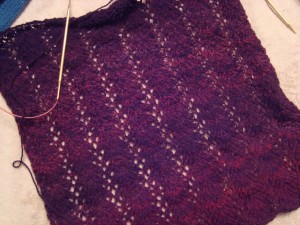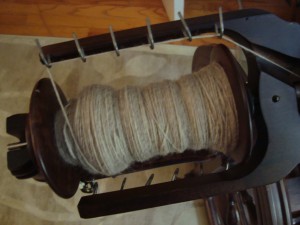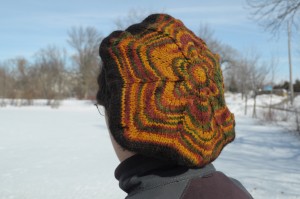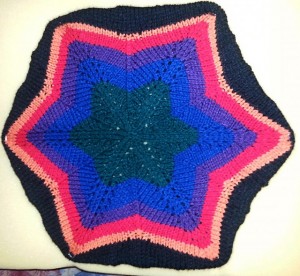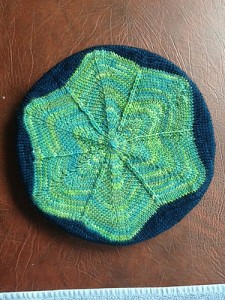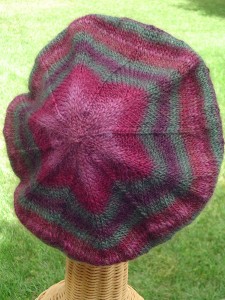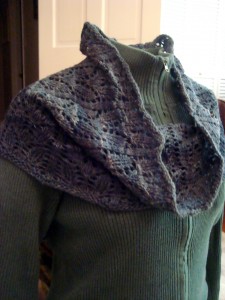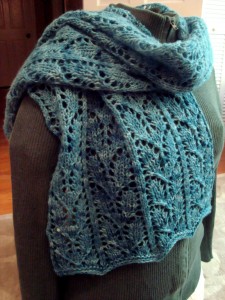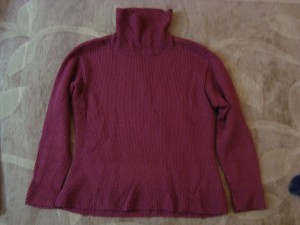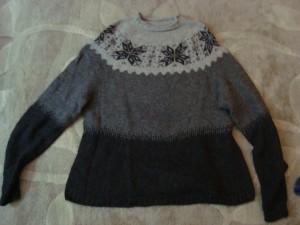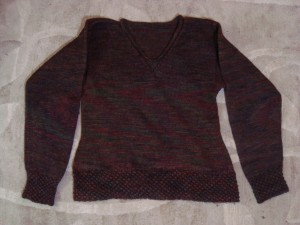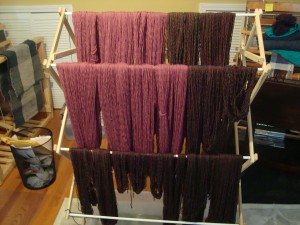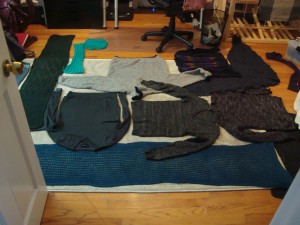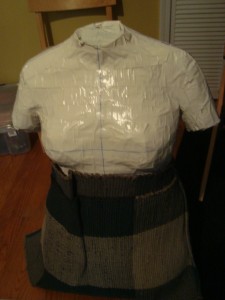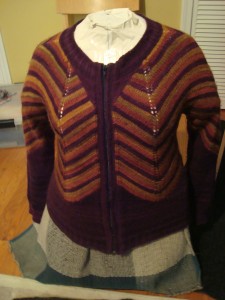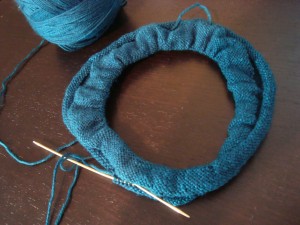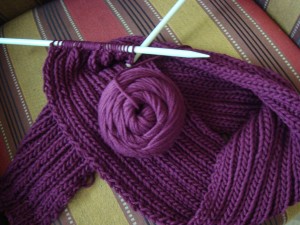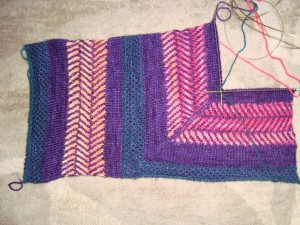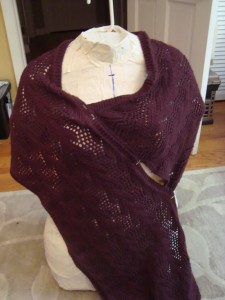In my current quest for a quick finish, I decided to take a little detour from knitting and work on some sewing for a while. With a simple pattern, you can have a sewn garment in a matter of hours, where a knitted one would take at least days if not weeks. Of course, being me, I didn’t take the simple route, even if I did choose a simple pattern.
My friend Heidi came over last week for some fiber play (we took a turn on her spinning wheel, mixed some batts, and generally had some fiber fun). She was wearing an embroidered linen tunic with a really simple construction that struck me as something that would be easy to make.
You might remember that sewing with handwoven fabrics is one of my long-term goals, and this shirt seemed like a really good candidate for handwovens. Minimal shaping and very basic design would make it an easy starter garment, and the rustic feel would work well with a coarse handwoven fabric. So, I set out to see what I could do.
Rather than start with a handwoven, I figured I’d develop the pattern with a commercial fabric. A quick trip to Joann’s got me a linen look blend, which has a slightly rustic feel but a nice weight and drape to it. It also has a pronounced simple weave structure, which is ideal for doing embroidery.
It’s been a long time since I’ve done pattern development from scratch. Twelve years ago I could have drafted a pattern in one go that would have worked, but my body has changed since then and my skills are a little rusty, so I decided to start out by using a little bit of a template.
I found a shirt in my closet with a fit that was kind of close to what I was going for, and started from there.
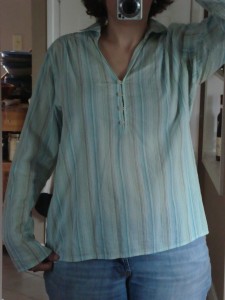
First, I laid the shirt out flat and traced the main body pieces onto paper, paying special attention to the armhole shaping.
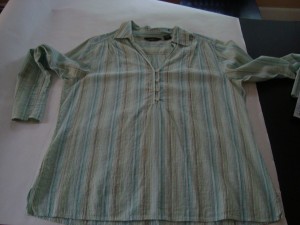
After a bit of fussing with curves and adjusting the neckline to fit the design I wanted to make, I cut a muslin from scrap fabric.
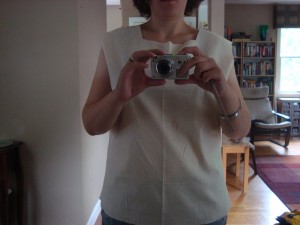
This let me get my hands on the 3D garment and start planning how I’d deal with the shaping. I checked out how the new neckline worked, and figured out how the garment would hang with the adjustments I’d made. Once the basic body shape was roughed up, I turned my attention to the accent details that I wanted to be the focus of the garment.
I had a picture in my mind of a set of embroidered gathers as the main decorative and shaping element for the piece. I wanted something that would match the rustic cut of the garment, and that would let me do the shaping I needed without cutting the fabric. I also needed to see what the gathers would do to the 3D shape of the fabric.
First, I started with paper. I cut out a shape that roughly matched my neckline and started folding to see what did (and didn’t) work, and what size of gather gave me the amount of take up that I’d need in the end. Then, I took a couple of designs that I liked most and sampled them out on scrap fabric. This let me see how the gathers looked in actual fabric (without the benefit of any ironing or finishing techniques), and it let me try them on to see how the contours matched the actual shape of my body.
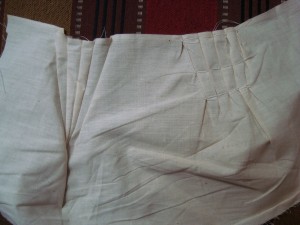
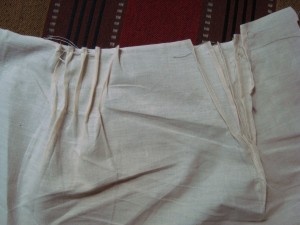
It turned out that this was a good idea, because both of the gathered patterns ended up making a strange point in the fabric that I wouldn’t have wanted in the middle of my chest. Placed more to the sides of the neck opening, that bump actually helped with the bust shaping. With feedback from the “swatches,” I went back and made the front of the actual garment, in the final fabric.
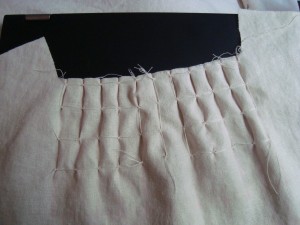
The gathers here are only placeholders, sewn in by hand as a temporary measure while I figure out the garment construction.
Eventually, I wanted to add embroidered details, and I had a leaning toward cross stitch. As I was wandering around my office, I noticed a weaving bobbin full of yarn that I’d used on a previous project. I really liked the colors, and the silk thread was about the right weight for the details I was looking for. So, I decided to try that in the swatch.

I really liked what I was getting, and the color changes of the variegated yarn sold me on using this one if I could. However, this is a knitting yarn made of silk, dyed in fairly intense colors. All of those things mean that it’s not optimized for embroidery. Most importantly, I wasn’t sure how colorfast it would be. That’s especially important when you’re stitching onto an off-white fabric, so I decided to do another test on the swatch.
I don’t really plan to wash this garment in hot water, but I wanted a margin of safety just in case. So, I washed the swatch in hot water, and this is how it came out.
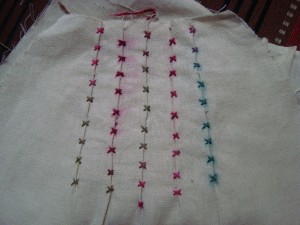
Definitely glad that this wasn’t the actual garment!
My options at this point were either to change the thread, or to find a way to reduce the bleeding. Silk yarns (and especially ones with intense colors) often have extra dye in them that isn’t discharged during the dye process, but they’re often colorfast once that extra dye is released. With that in mind, I took a small skein of the yarn, and soaked it in hot water multiple times. Each time, the amount of dye released seemed to reduce, and the amount that blotted off onto a paper towel had almost disappeared after about 5 washes.
I started a new swatch to play with the hem accent design, and to test the wash fastness of the prewashed yarn. Here it is, after two washes (one in cold water, one in hot).

There’s still a tiny bit of bleeding on the hot water wash, but not nearly as much as the first time, so I think it’s probably safe to use.
Yesterday, I added some sleeves, finished up the back shaping, and sewed the hems on the garment itself.
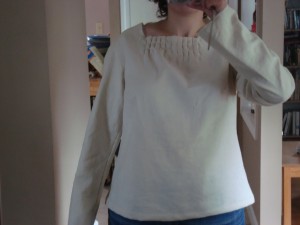
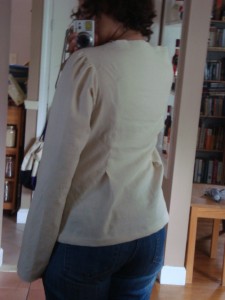
At this point, all that’s left is finishing the neckline and adding the embroidery. Not exactly a quick finish, but it was fun to change gears for a while and polish up some rusty skills!

